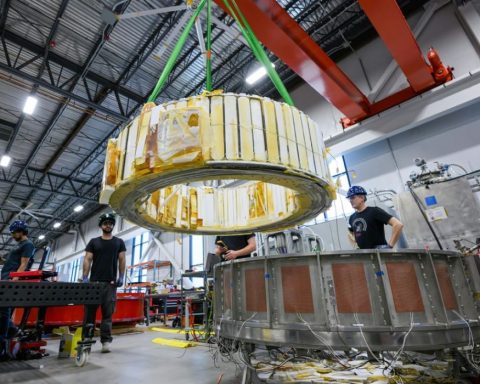Hydro-Québec is making a push into China’s exploding market for electric vehicles.
The provincially owned utility is evolving from a company that simply generates and delivers power to one that does business across the electricity supply chain.
In its strategic plan, released in December, Canada’s largest power utility pins big hopes on growth opportunities beyond its border, including convincing the world’s leading auto manufacturers to integrate Hydro-Québec’s EV powertrains into their vehicles.
The company’s focus to date has largely been on increasing its low-carbon hydropower exports to the American northeast and Ontario. The company is looking to play a leadership role as those governments adopt policies that would increase the use of electricity for transportation and buildings and decarbonize regional power grids, CEO Éric Martel said in an interview.
“We are very focused on this,” Martel said. “We have different fronts now to improve our top line and bottom line. It’s been part of the DNA of our company for a long time; we have that research centre with a lot of technology that we’re trying to leverage as much as possible.”
But Hydro-Québec is also pursuing new business opportunities: as the owner of the largest network of EV charging stations in Quebec, the manufacturer of key components for electric motors, and the developer of new solid-state batteries that could replace lithium-ion batteries.
The utility this fall launched a new subsidiary, Hilo, which will offer a range of products and services for residential and commercial customers to manage their energy use more efficiently.
Its biggest manufacturing gambit involves Dana TM4, a producer of motors for electric vehicles that was created last year when Hydro-Québec merged its wholly owned subsidiary, TM4, with the electric motors division of Ohio-based Dana Inc. The Quebec utility remains a 45% partner in the joint venture.
Dana TM4 recently increased its footprint in China, with Hydro-Québec investing $85 million to help finance a growth strategy in one of the world’s fastest growing markets for electric vehicles.
“China is the biggest market for EVs,” Martel said, noting the Chinese are putting up to 100,000 new electric buses on the road every year.
“It’s a tough market because there are a lot of Chinese competitors . . . but we’ve been growing our market share.”
Bloomberg New Energy Finance (BNEF) – which tracks low-carbon energy markets – forecast that China would add 1.5 million electric cars to its fleet this year, representing some 7% of total sales for personal vehicles.
The country is expected to account for 60% of all EV sales five years from now, BNEF says.
Financed in part by Hydro-Québec’s $85 million investment, Dana TM4 also acquired full control of Chinese company Dana Electric Motor Co., formerly Prestolite E-Propulsion Systems (PEPS). Previously 50% owned by Dana TM4, Dana Electric manufactures and markets electric powertrain systems, particularly for buses and trucks.
Success in the Chinese market will allow Dana TM4 to target other regions that are moving to speed up the adoption of electric vehicles, Martel said.
Meanwhile, Hydro-Québec – which is one of the world’s largest hydroelectric power producers – is also counting on a growing North American appetite for low-carbon electricity to fuel its growth over the next decade.
It has run into some roadblocks, however.
The company inked a 20-year deal to supply power to Massachusetts starting in 2022 that could generate $500 million a year in revenue for the utility.
But state regulators blocked an initial proposal for a transmission line through New Hampshire, and Hydro-Québec’s plan B, which includes a 233-kilometre line through Maine, is now also facing challenges.
Hydro-Québec has long eyed increasing exports to its neighbour Ontario, and upgrades to the transmission line between the two provinces has added capacity for 1,200 megawatts of base-load deliveries.
Unfortunately, Ontario is no longer entering into long-term power contracts, and Hydro-Québec will have to compete with other producers in annual auctions.
Martel said he’s confident the company can be competitive, especially given the urgent global need to dramatically reduce greenhouse gas emissions. With the ability to store water behind dams, Quebec could serve as a kind of battery to complement renewable electricity supplies that are intermittent, he said.
But he worries that states and provinces are more interested in working in isolation than in finding regional answers.
“I don’t think we’re moving fast enough” on reducing emissions, he said.
“We need to provide leadership in our region. If we are all working together in a region, we can have much more impact than we are having right now.”
Shawn McCarthy is an Ottawa-based writer.







